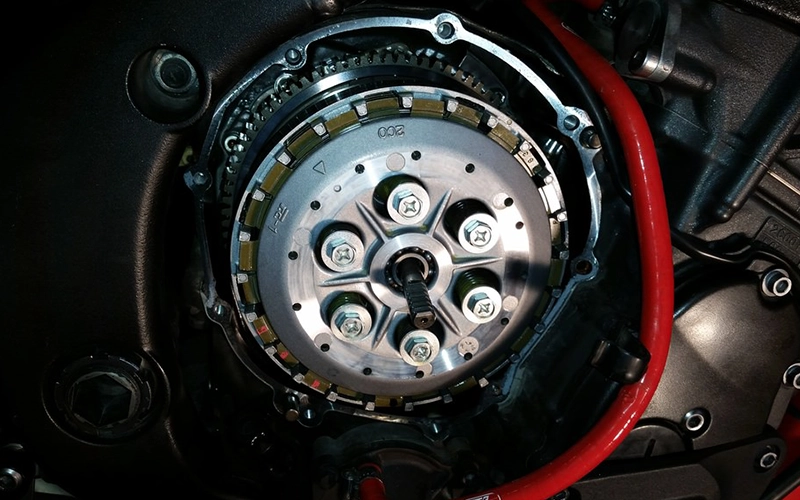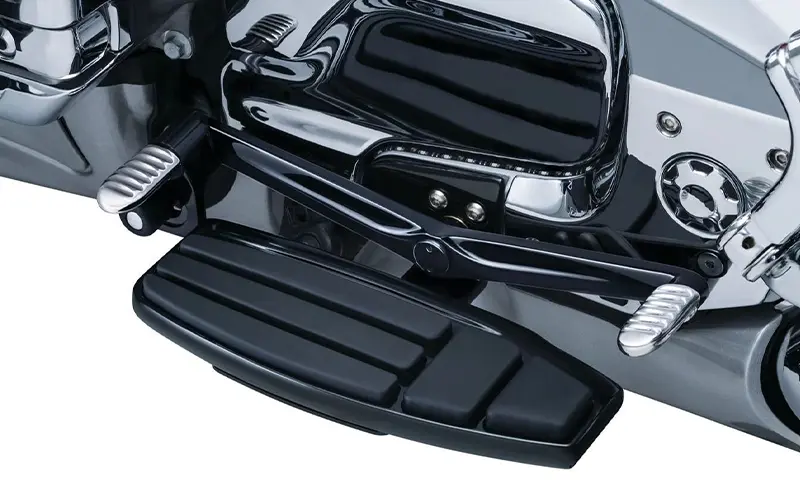There’s something pure about riding a Kawasaki Ninja 400 — the throttle response, the balance, the way it hugs corners. Whether you’re a weekend canyon carver or a daily commuter with a need for speed, there’s one upgrade that transforms your riding experience more than most: the slipper clutch.
If you’ve ever felt the rear wheel jerk or hop under hard downshifting, you already know why this matters. A slipper clutch smooths everything out. It doesn’t just feel better — it is better. It protects your transmission, gives you more confidence under braking, and helps you ride harder and safer. And the good news? Installing one isn’t rocket science. If you’ve got a decent set of tools and a little patience, you can do it at home.
So let’s walk through how to install a slipper clutch on a Kawasaki Ninja 400 (2018–2023) and why it pairs beautifully with Kawasaki Ninja 400 Clutch Plates 2018–2023, available now at Aliwheels.
First, What Is a Slipper Clutch — And Why Should You Care?
A slipper clutch, also called a back-torque limiter, is a performance clutch mechanism designed to partially disengage the clutch under heavy engine braking. In real-world terms, when you’re flying into a corner and quickly downshifting, the slipper clutch helps prevent your rear tire from locking or skipping due to sudden RPM drops.
For a lightweight sportbike like the Ninja 400 — where downshifts can be snappy and aggressive — this system adds a level of smoothness and safety that you’ll notice immediately.
No more rear-wheel chatter. No more abrupt jolts. Just a smoother, more controlled ride.
What You’ll Need Before Getting Started
Let’s not sugarcoat it — installing a slipper clutch requires opening the right-side engine cover, so this isn’t just a five-minute bolt-on mod. But it’s manageable with the right mindset and prep.
You’ll need a clean workspace, a basic motorcycle toolkit, some mechanical confidence, and:
- Torque wrench
- Clutch holder tool (you’ll thank yourself for this)
- Gasket scraper or razor blade
- Engine oil + filter (you’ll be draining the oil)
- Thread locker
- Optional but recommended: a service manual for torque specs
And of course — your slipper clutch kit, compatible with the Kawasaki Ninja 400 2018–2023, and a fresh set of Kawasaki Ninja 400 Clutch Plates 2018–2023. You don’t want to reuse worn plates after making this upgrade.
Let’s Get Into It — The Installation Process
Step 1: Drain Your Engine Oil
Start with the bike upright and the oil warm. Place a drain pan underneath, remove the drain bolt, and let the engine oil fully drain out. Take this moment to swap out your oil filter too — fresh start, fresh feel.
Step 2: Remove the Clutch Cover
Using your socket set, remove the bolts from the right-side clutch cover. It’s smart to keep track of which bolts go where — they’re usually different lengths. Gently tap around the edges with a soft mallet if the cover doesn’t come off easily. Watch for the gasket; if it tears, you’ll need to scrape and replace it.
Step 3: Disassemble the Stock Clutch
This is where things start getting fun. Remove the clutch springs and the pressure plate. Pull out the clutch plates and steel plates — keep them in order just in case, although you’ll be replacing them with new ones anyway. Next, use your clutch holder tool to secure the hub and remove the center nut. That hub will slide off with a bit of wiggling.
Step 4: Install the Slipper Clutch Hub
Slide the slipper clutch assembly into place, paying attention to alignment marks (every kit is a little different, so follow the included diagram or manual). Apply thread locker to the main shaft nut and torque it to spec — usually around 100-120 Nm, but confirm for your clutch brand.
You’re almost there.
Step 5: Reinstall with New Clutch Plates
This part’s crucial: use fresh Kawasaki Ninja 400 Clutch Plates 2018–2023 from Aliwheels. Not only are they tested for compatibility, but they’re built to handle high-performance setups like a slipper clutch system.
Install the plates in the exact order provided in your kit’s instructions — it may differ slightly from OEM setups. This is what allows the slipper mechanism to work properly.
Once the plates are in, reassemble the pressure plate and springs. Torque everything down to spec (usually 8–10 Nm), being careful not to overtighten.
Step 6: Button It Back Up
Clean the old gasket off the clutch cover and engine case. Wipe everything down, then apply a fresh gasket or sealant. Reinstall the clutch cover and torque the bolts down in a cross-pattern to avoid warping.
Step 7: Refill Oil, Adjust Clutch, and Test
Pour in your fresh oil, then adjust your clutch lever free play (2–3mm at the lever is ideal). Start the bike, pull the clutch, and test how it feels in gear. There may be a slight bedding-in period, so give it a short ride and make any final adjustments.
The Result? A Whole New Ride
The first time you downshift hard into a corner with the slipper clutch installed, you’ll feel it. That buttery smooth engagement. That added confidence when engine braking. It’s like the Ninja 400 finally unlocks its full potential.
This isn’t just a racer’s mod — it’s a street rider’s upgrade. You don’t need to be setting lap records to benefit from a slipper clutch. It makes everyday riding smoother, safer, and more refined. Whether you’re chasing apexes or just avoiding traffic, the difference is real.
Why Aliwheels Is the Go-To for Ninja 400 Riders
Here’s the thing: not all motorcycle parts are created equal. When you shop at Aliwheels, you’re getting parts curated specifically for performance-focused riders. Whether you’re searching for clutch upgrades, radiators, fairings, or footrests — we carry what real riders actually use.
Our Kawasaki Ninja 400 Clutch Plates 2018–2023 are trusted by riders across the globe. They’re made to meet strict specs, tested for durability, and crafted for optimal performance.
Need help choosing parts? Our support team knows their stuff. You won’t get vague answers — you’ll get real advice, from people who ride what you ride. If you’re looking for another trusted resource for parts, Saki Dealers is another excellent option for top-tier Kawasaki components.
Wrapping It Up — And Taking It to the Streets
Installing a slipper clutch isn’t just a technical upgrade — it’s a rider’s statement. You’re saying you take your performance seriously. You value smoothness, control, and the kind of precision that makes every ride feel more connected.
With the right tools, a little time, and the right components — like the Kawasaki Ninja 400 Clutch Plates 2018–2023 — this upgrade can easily be done in your own garage. And once it’s installed, the road opens up in a whole new way.
No more lurches. No more rear-wheel hop. Just clean, crisp downshifts and full throttle confidence.










